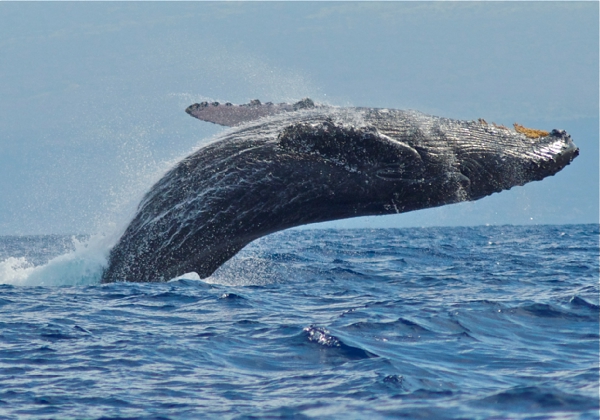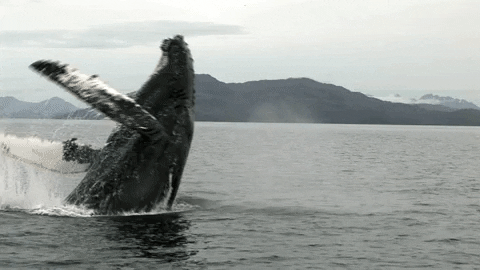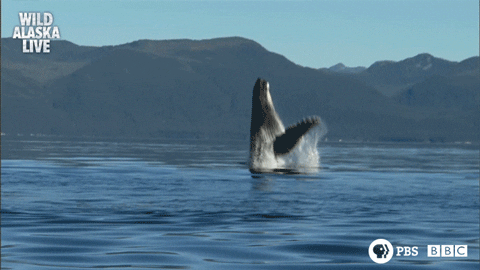Why Do Humpback Whales Breach?
Dive into the ocean and learn why humpback whales jump out of the water

Like so many of you, I am juggling working from home with two school-aged kids. And while it has been hard to physically distance ourselves from friends, neighbors, coworkers and the community—we are all doing our part to limit the spread of the COVID-19 virus. We are continuing to follow guidelines to #FlattentheCurve—spending our days reading (Harry Potter, of course), playing board games, going for walks in the woods and learning more about the ocean.
And as the resident ocean expert in my house—I was recently faced with an ocean question that I could not answer: Why do humpback whales jump out of the water? Like all good parents, I answered their question with a question: Why do YOU think they jump out of the water? I was met with a variety of answers—all of which seemed plausible.
Dive in with me and discover why humpback whales jump (or breach) out of the water.
Get Ocean Updates in Your Inbox
Sign up with your email and never miss an update.
Why do humpback whales breach …?
To get some air?
No! But, extra points for remembering that whales are mammals and that they need air to breathe. On average, adult humpbacks surface every 7-15 minutes. Calves must swim up to the surface every 3-5 minutes to catch some air to breathe.

Because it is fun?
No! But, you have a fin-tastic point. It does look like the whales are having a fun time. Breaching is when most or all of the whale’s body leaves the water. Humpback whales can use their powerful fluke (or tail fin) to launch themselves out of the water. And while many other whale species breach, humpback whales seem to breach more frequently.

To teach their kids how to jump?
No! But did you know that humpback mothers are truly wonderful? We know that a baby is dependent upon its mother for basic survival—food, shelter and in the case of humpback whales—breathing! Mom humpback whales bring their baby calves to the surface right after birth so they can take their first breath of air. A humpback mother is the definition of “attachment parenting,” she never leaves her baby calf. It is the calf, after a year or so, who decides when it’s time to leave the mother’s side.

To communicate with other humpback whales?
Yes! Scientists suspect humpback whales are breaching and slapping their fins and flukes on the surface as a way of communicating. It is believed that all slapping creates sounds used to send messages to other whales, and the big splashes are for sending messages long-distances. Sound travels further and more rapidly underwater than it does on land and could possibly communicate messages to other whales.

So, there you have it—humpback whales breach in order to communicate with other whales, who may be far away. The bigger the splash, the further the sound will be able to travel underwater.
Staying connected—even if we are socially distancing—is whale-y important, now more than ever. Think like the humpback whale and find a way to communicate to those in your life who may be far away. Call, text, video conference or splash to tell the ones in your life you are thinking of them.